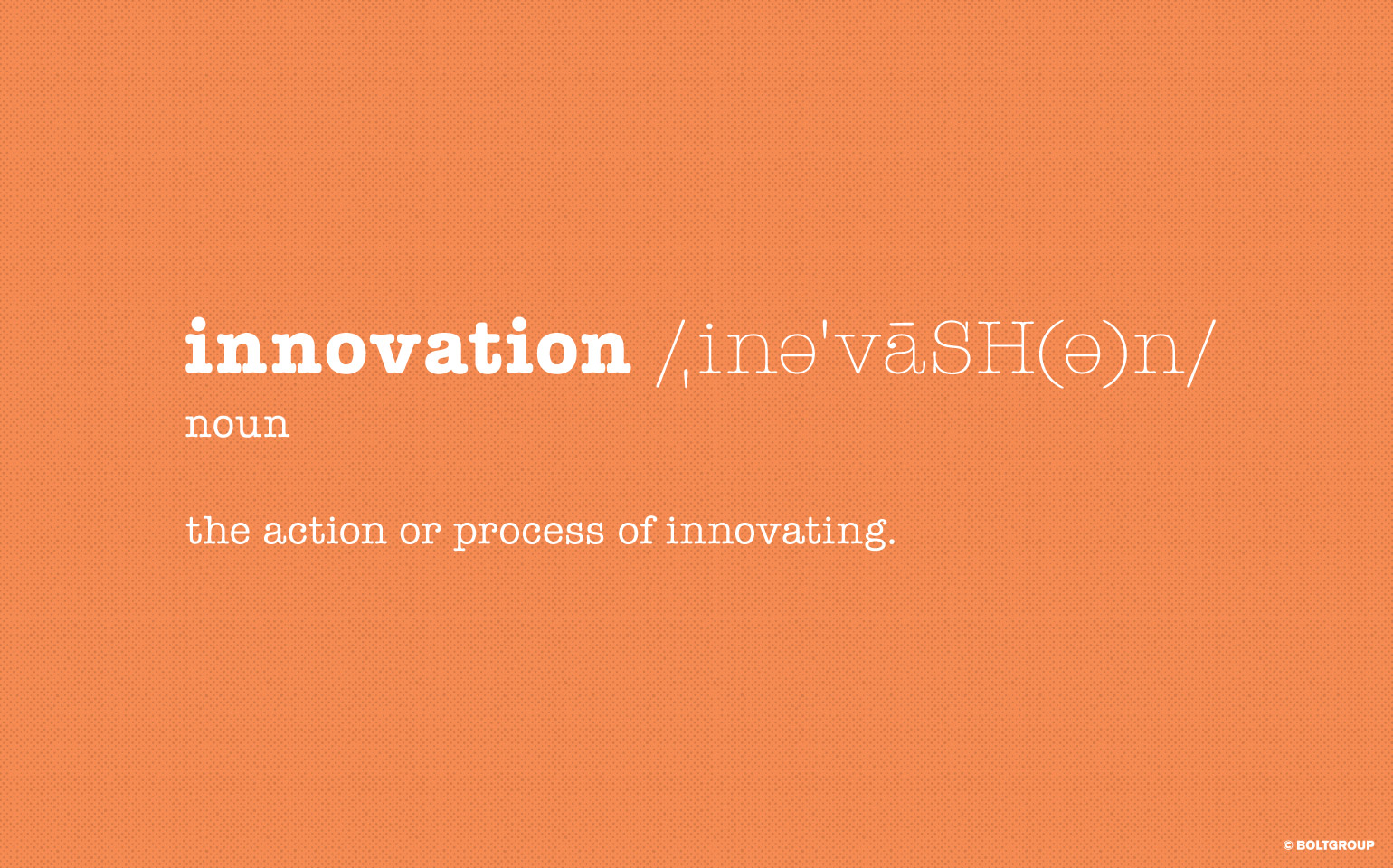Words Matter
The process of building a culture of creativity and innovation requires a common language. Why? First, because words can hold different meanings from person to person, company to company. Words like customer, design, prototype—even the word “innovation” can be misunderstood without a shared lexicon. Second, people can think better and collaborate better when they share the vocabulary needed to formulate thoughts and build on each others’ ideas.
Words are symbols that encode thoughts, and thoughts are what make up ideas. Anthropologists have shown that tribes with limited counting words are also limited in their cognition when it comes to counting systems. They cannot say it, so they cannot think it. Some scientists argue that prehistoric humans had to develop language before they could develop tools.
Wine connoisseurs describe how they learned to truly “taste” only after they learned the descriptive language of the trade. Middle school students often struggle to describe a painting—their vocabulary lacks words to describe things like mood or color intensity or depth. Once taught these words, they “see” paintings differently.
The Glossary of Design and Innovation
To help build your innovation culture, develop an Innovation Glossary. Consider the glossary within three spheres: your organization, your category or industry, and the world. Create definitions of each word specifically for your organization. Now insert definitions of those words in the industry and in the world. Use Venn diagrams to understand where your definitions differ from the world and where they’re the same. Add synonyms to clarify meaning. And add stories to the definitions—tribal knowledge about events that have occurred within your industry or organization.
Include words that might hamper innovation so they can be defined and discussed…words like Proof, Legacy, and Failure.
Be wary of words that have multiple definitions. If possible, divide those words into more specific words. For example, “prototypes” are key to successful design thinking and innovation. But just what is a prototype? Below are some of the words we use to describe what we call prototypes of a physical, three-dimensional object (a category we call “hard prototypes”). Note the synomyms we add for clarity….
- Mockup (aka “sketch” model)—a low-fidelity model, made quickly and often by hand, to represent an idea
- Human factors model—a low- to medium-fidelity physical model with enough accuracy to evaluate human interaction
- Appearance model (aka “looks-like” model)—a model that looks like the real thing, but does not work like the real thing, and is not made from final production processes
- Engineering model (aka “works-like”, ” Frankenstein”, “proof-of-principle” model)—a model that works like the real thing but does not look like the real thing
- Working model (aka “works like / looks like” model or “Alpha prototype”)—looks and works like the real thing, but may not be made from the final production processes
- Production prototype (aka “Beta prototype”)—prototype using final production materials and processes.
- And beyond these physical hard prototypes there is separate list of “soft” prototypes—digital interfaces, apps, websites, videos and associated story boards—all used to evaluate design ideas just like hard models do
Use Pictures to Add Meaning
A verbal vocabulary is not enough. Most people think in images. Educators know that to reach some students, ideas must be presented as images. In her book, “Thinking in Pictures”, Temple Grandin describes how she overcame the communication limits of her autism by seeing the world as a catalog of snapshots in her mind. “I visualized concepts such as peace or honesty with symbolic images. I thought of peace as a dove, an Indian peace pipe, or TV footage of the signing of a peace agreement. A news report describing a person returning a wallet with all the money in it provided a picture of “honest” behavior. The Lord’s Prayer was incomprehensible until I broke it down into specific visual images.”
Flesh out your innovation glossary with images. In our business, we often work with clients to create a consistent family look across a line of products—called a “design language” or “visual brand language.” The first step we take is to work with the company executives to define key attributes of the product and brand. For example these might be words like premium, robust, and friendly. But these words often have different meanings for different people. So we collect images of people, places, things, and events that represent those attributes. Then we work with our client to build consensus around the shared meanings.
For your Innovation Glossary, create a word / image wall in the office and on the your company’s intranet. Show your innovation process with pictorial storyboards rather than merely word-laden flow charts. Coach the lexicon within the team. And develop a process for the glossary’s refinement and additions.
The Positive Impact of One Language
With a thoughtful, shared, innovation lexicon your executives and staff can learn the language of innovation and speak without concern of hidden meanings. Innovation goals can be made clearer. Obscure objectives can become transparent for everyone in the company. Collaboration will be simplified. And ideas will flow more freely.
